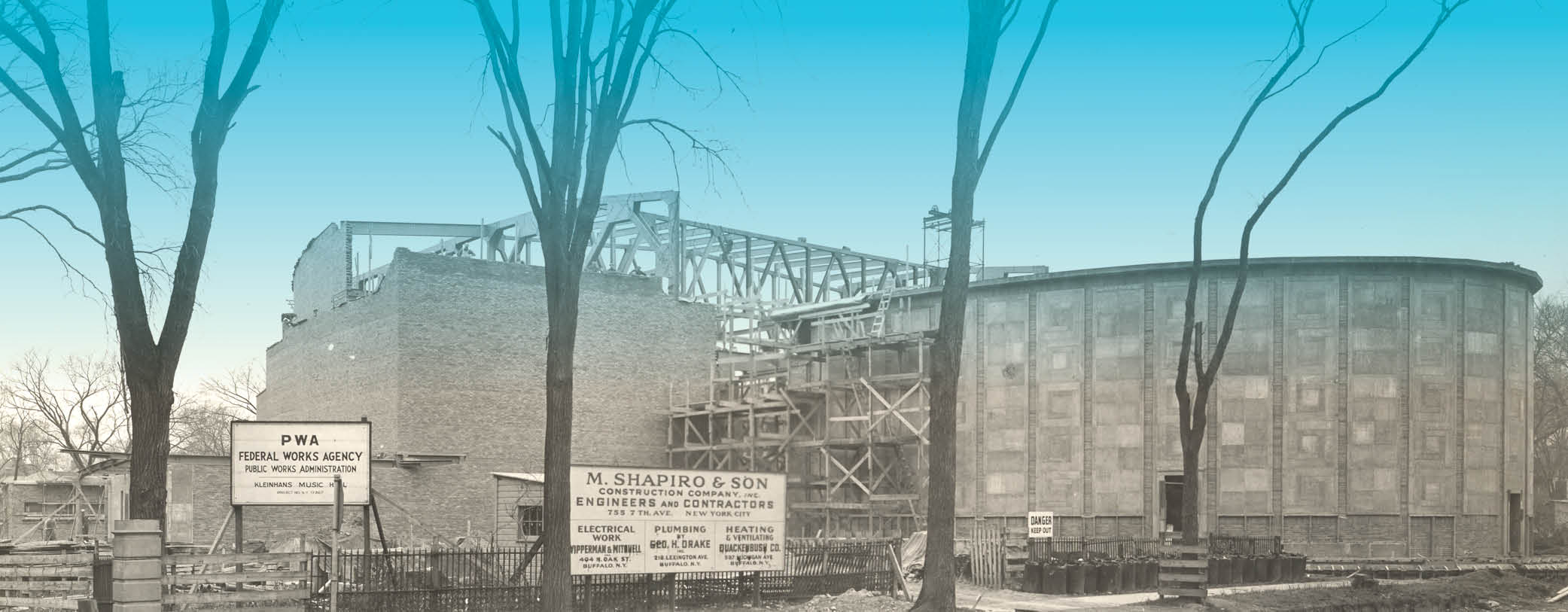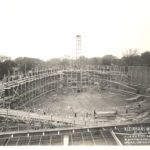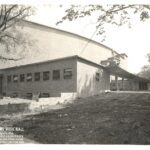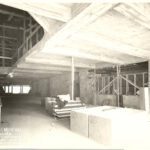
Mission, History & Architecture
Kleinhans Music Hall is designated as a National Historic Landmark with an international reputation as one of the finest concert halls. Orchestra musicians, conductors, and soloists have long admired Kleinhans, including Jascha Heifetz (“It’s a joy to play in this hall”); Artur Rubenstein (“Any artist gives his best in a hall such as this”); and Serge Koussevitzsky (“Kleinhans Music Hall is a dream of a lifetime – perfect and complete.”) Kleinhans is considered one of the most acoustically perfect halls in the world, and that perfection has not diminished through the years.
Kleinhans Music Hall was built thanks to the generosity and vision of Edward and Mary Seaton Kleinhans and the stewardship of their charitable dreams by the Community Foundation for Greater Buffalo. The Community Foundation was bequeathed the estates of Mr. and Mrs. Kleinhans, who made their fortune from the clothing store that bore their name, and who died within three months of each other in 1934. The hall was completed using funds from the Public Works Administration.
The Kleinhans, who were music lovers, found the Elmwood Music Hall drafty and acoustically imperfect, and specified their money was to be used “to erect a suitable music hall…for the use, enjoyment and benefit of the people of the City of Buffalo.”
Kleinhans Music Hall was officially opened on October 12, 1940; this date also marked the Buffalo Philharmonic’s first concert in the hall under the baton of Franco Autori.
Kleinhans Music Hall was designed by the famous Finnish father-and-son team of Eliel and Eero Saarinen, along with architects F.J. and W.A Kidd. Kleinhans is known for its combination of graceful structural beauty and extraordinary acoustics. The design of Kleinhans Music Hall resembles the body of a string instrument, as does the main auditorium. There are three notable rooms within Kleinhans: the Main Auditorium, Livingston Hall (named in memory of Mary Livingston, mother of Mr. Kleinhans), and the Mary Seaton Room (a memorial to Mr. Kleinhans’ wife, Mary Seaton Kleinhans).
Eliel Saarinen’s aim was to create “an architectural atmosphere…so as to tune the performers and the public alike into a proper mood of performance and receptiveness, respectively.” In 1989, the hall was designated a National Historic Landmark, the highest designation of significance a site or structure can receive.
Construction of Kleinhans Music Hall
Click each image for a larger view.











